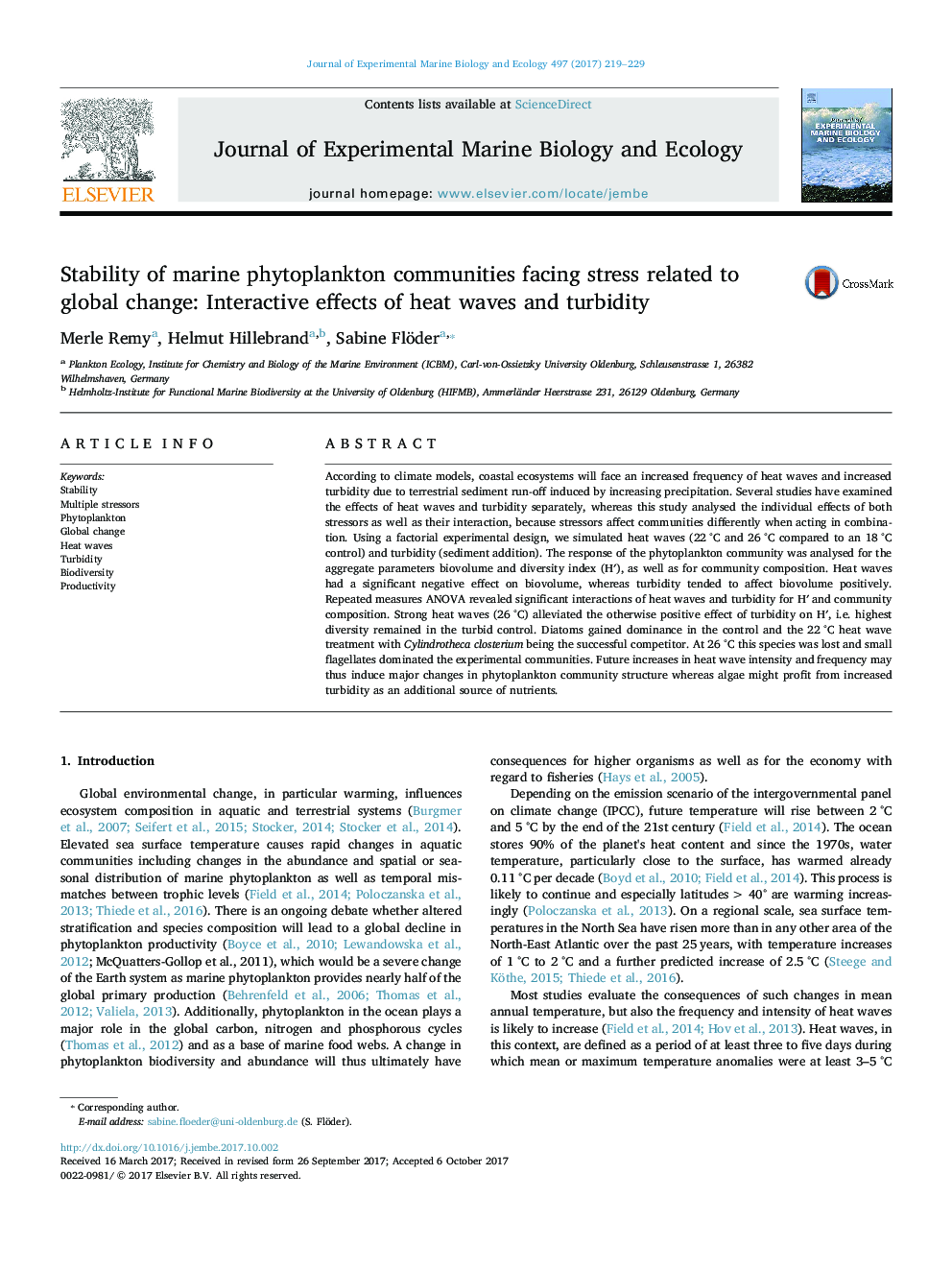| Article ID | Journal | Published Year | Pages | File Type |
|---|---|---|---|---|
| 8849032 | Journal of Experimental Marine Biology and Ecology | 2017 | 11 Pages |
Abstract
According to climate models, coastal ecosystems will face an increased frequency of heat waves and increased turbidity due to terrestrial sediment run-off induced by increasing precipitation. Several studies have examined the effects of heat waves and turbidity separately, whereas this study analysed the individual effects of both stressors as well as their interaction, because stressors affect communities differently when acting in combination. Using a factorial experimental design, we simulated heat waves (22 °C and 26 °C compared to an 18 °C control) and turbidity (sediment addition). The response of the phytoplankton community was analysed for the aggregate parameters biovolume and diversity index (Hâ²), as well as for community composition. Heat waves had a significant negative effect on biovolume, whereas turbidity tended to affect biovolume positively. Repeated measures ANOVA revealed significant interactions of heat waves and turbidity for Hâ² and community composition. Strong heat waves (26 °C) alleviated the otherwise positive effect of turbidity on Hâ², i.e. highest diversity remained in the turbid control. Diatoms gained dominance in the control and the 22 °C heat wave treatment with Cylindrotheca closterium being the successful competitor. At 26 °C this species was lost and small flagellates dominated the experimental communities. Future increases in heat wave intensity and frequency may thus induce major changes in phytoplankton community structure whereas algae might profit from increased turbidity as an additional source of nutrients.
Keywords
Related Topics
Life Sciences
Agricultural and Biological Sciences
Aquatic Science
Authors
Merle Remy, Helmut Hillebrand, Sabine Flöder,
